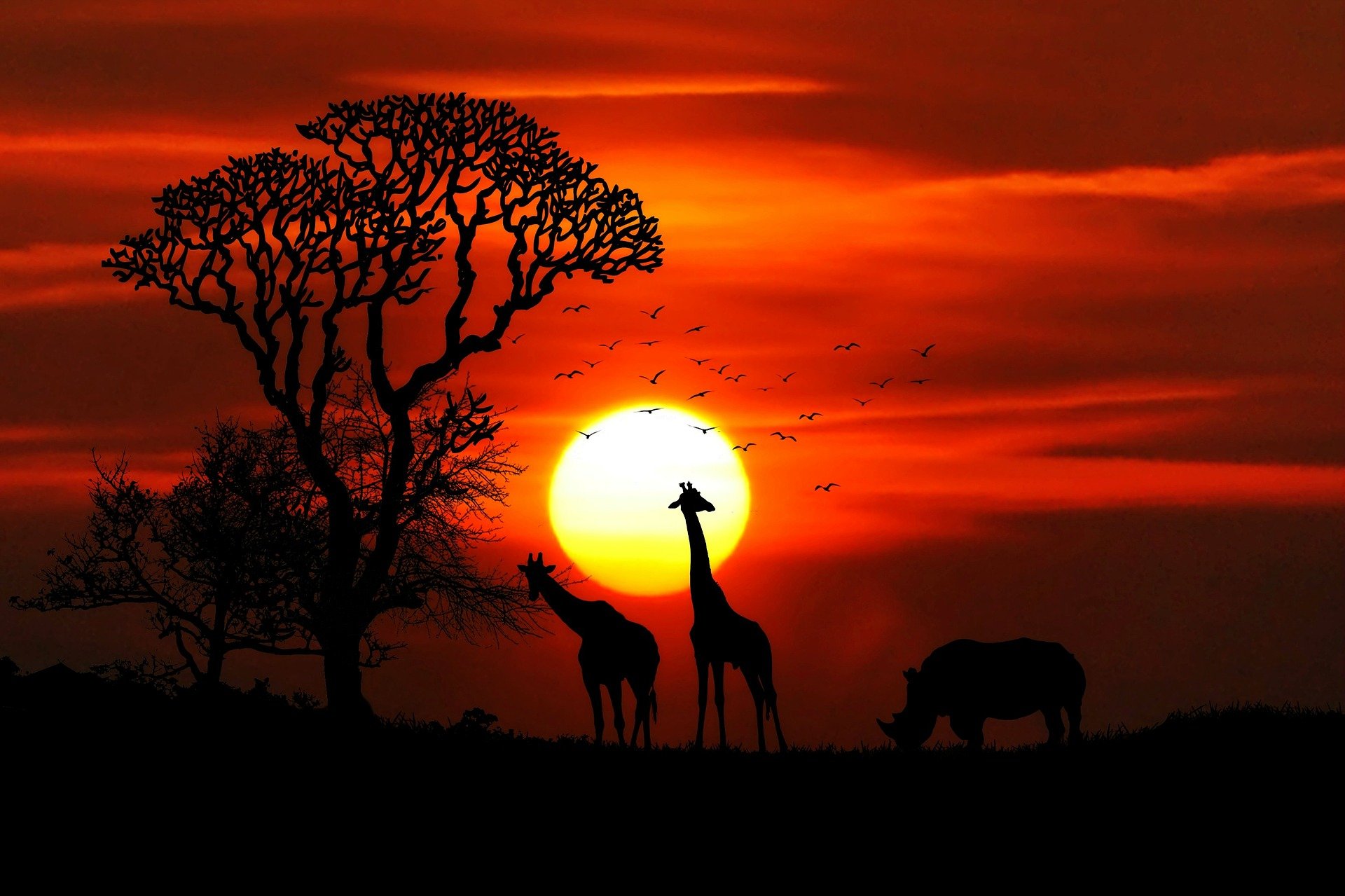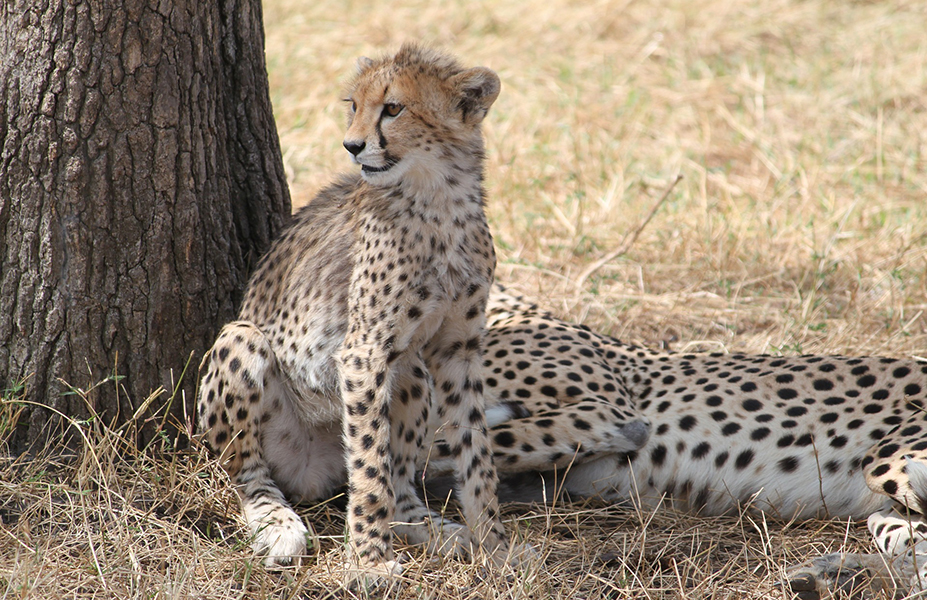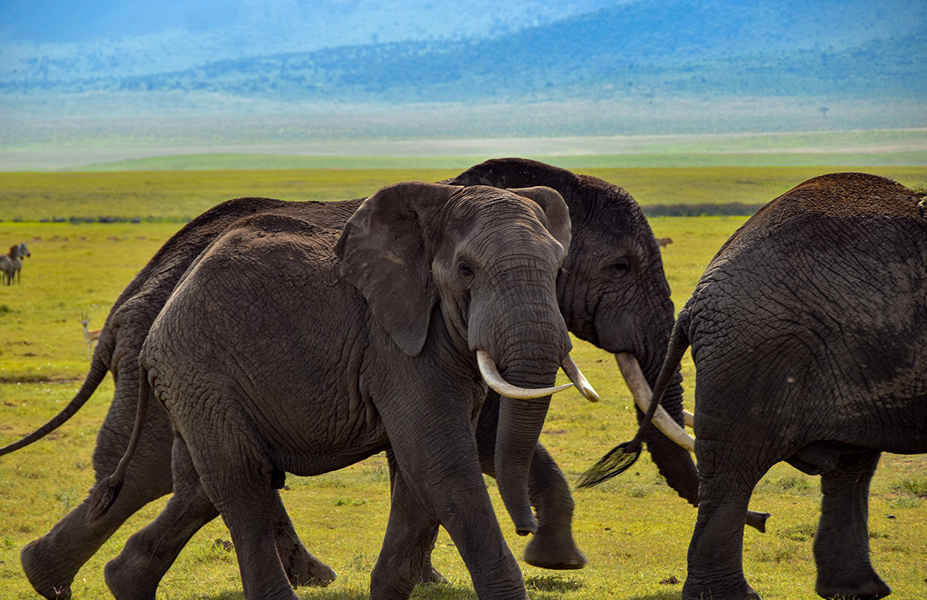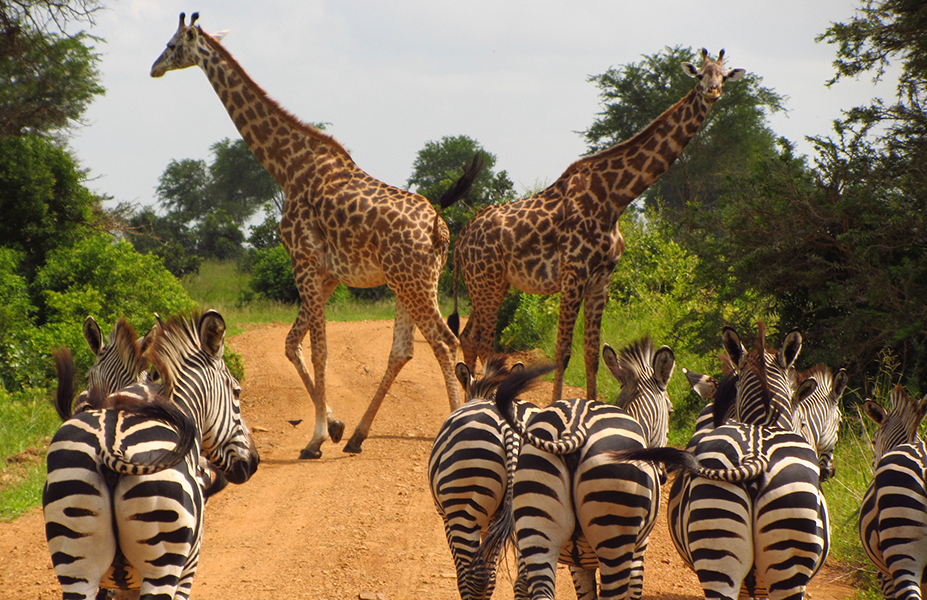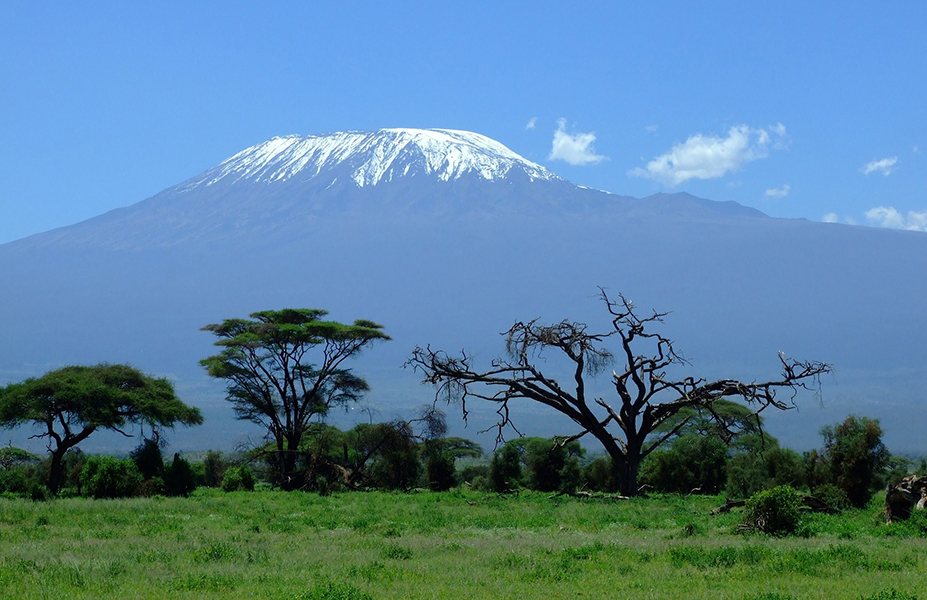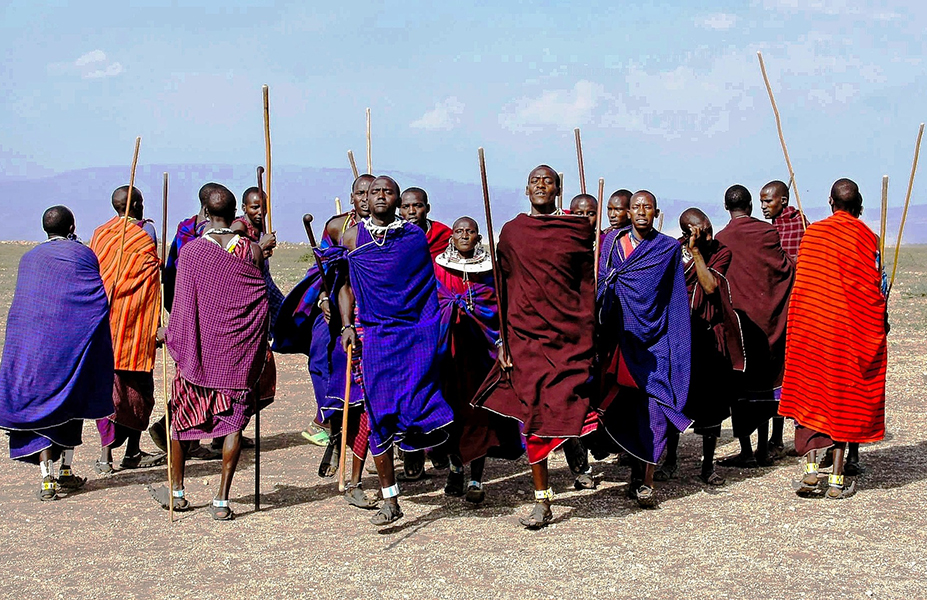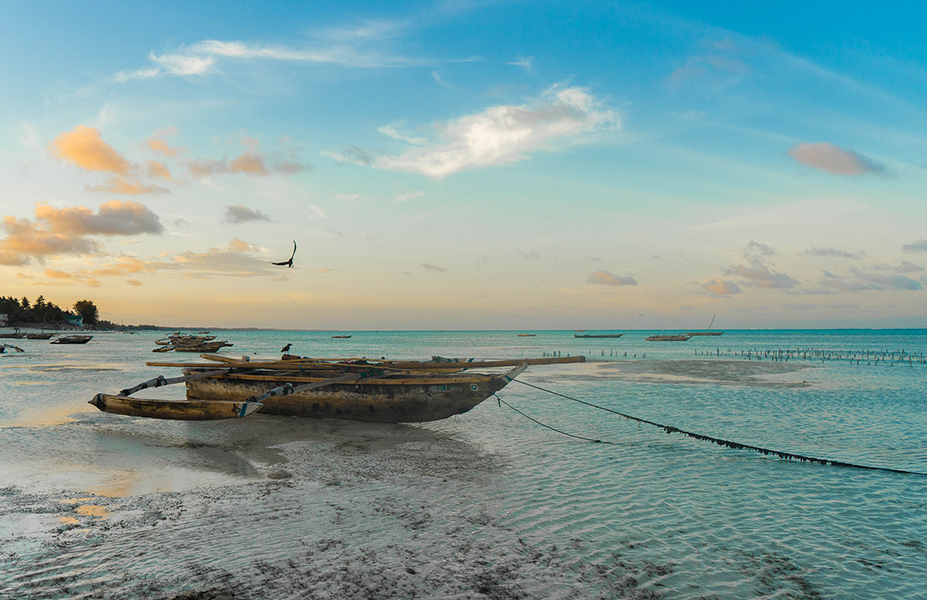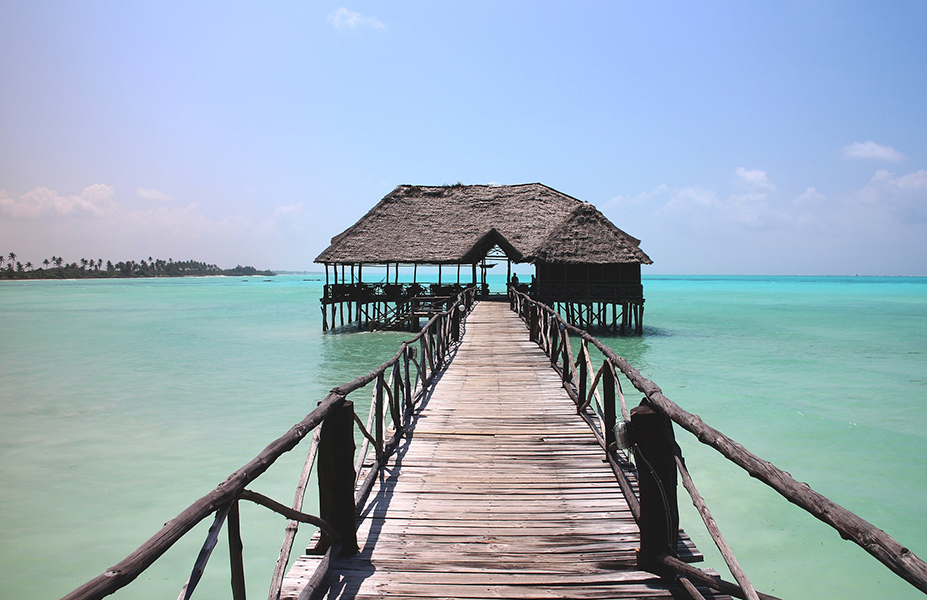Don’t miss next deals! Sign up for email alerts. Subscribe to #africa alerts »
Currency – Tanzanian shilling (€)
Language – Swahili and English (official); indigenous languages
Vaccine – Yellow fever vaccine. Typhoid fever, Hepatitis, Antitetanos, Malaria. Endemic malaria, experts recommend taking prophylactics during the trip and the 15 days before and after it. Rabies vaccination is also advised for tourists traveling to Zanzibar.
Electricity – 230V. 50 Hz. Power plugs and sockets are of type D and G
EMERGENCY TELEPHONES
National Police: 112
Medical emergency: 114
Tanzania is located on the east coast of Africa. It borders Kenya and Uganda to the north, Zambia, Malawi and Mozambique to the south, Rwanda, Burundi and Zaire to the west, and the Indian Ocean to the east.
In the country are the islands of Zanzibar, Pemba and Mafia. It has large mountains in the north and south, a central plain rich in savanna and forest, and a tropical coastline on the Indian Ocean. The highest mountain in the country is Mount Kilimanjaro, at 5,895 m. tall.
To the west is the great Lake Tanganyika, located at 772.4 m. Below sea level. Its most important rivers are the Rufiji, the Ruvuma that forms the border with Mozambique and the Ruvu.
TOURIST SITES OF TANZANIA
Dar es Salam – In the Mnazi Mjoja Park you can see street performances by the natives, who perform music, sing and dance. One of the main attractions of the park are the stalls that the sorcerers of the tribes set up to sell their remedies against any disease.
In the National Museum archaeological remains, objects from the German colonial era, jewelry, wood carvings, musical instruments and clothing of the different tribes are exhibited.
Arusha – There is the National History Museum where you can see an interesting sample about the origins of man.
Bagamoyo – In the city is the chapel in which Livingstone’s body rested before being transferred to Westminster Abbey, in Great Britain.
Seregeti National Park – The park has 14,763 km2, which is home to a large number of animals. Between May and June the migration begins, the herds of wildebeest, zebra, and other herbivores move towards the pastures. Lions, hyenas, jackals, wild dogs, vultures and other carnivores are also found in the park, keeping an eye out for large herds.
The Park can be reached by road from Arusha, Mwanza and Musoma or with flights from Lobo, Seronera and Ngorongoro.
Ngorongoro Crater – Described as one of the “wonders of the world” by Professor Bernard Grzimek, Ngorongoro was an active volcano 2 million years ago. Today it is the largest intact crater in the world, declared a World Heritage Site. Raised to 2,600 m. Above sea level, inside its crater the height is 1,800 m., by 20 km in diameter. Thousands of animals and birds inhabit it, such as flamingos. On its edge are the Lodges: Ngorongoro Wildlife, Ngorongoro Crater and Ngorongoro Forest Resort. The water that the crater receives continuously allows to maintain a resident population of animals throughout the year.
Olduvai Gorge – Between the Seregeti Park and the Ngorongoro Crater is the Olduvai Gorge, called “The Cradle of Humankind”. Animal remains have been found dating back at least more than two million years. In 1959 the relic of the man “Nutcracker” was discovered, currently kept in the National Museum of Dar es Salaam. Nearby is Laetoli, where homenoid tracks were discovered in 1979. To the north is the Oldonyo Lengai volcano, called “Mountain of God”.
The Great Lakes: – Tanzania is surrounded by lakes Victoria, Tanganyika and Nyasa, located to the north, east and south of the territory respectively. Tanganyika is the second deepest lake in the world and on its eastern shore are the Gombe and Mahale National Parks, which are home to jungle animals, savanna and groups of chimpanzees. In the three lakes you can find animals, birds and fishing of all kinds.
Mount Kilimanjaro – It is the highest mountain in Africa, located south of the Equator. It has two peaks that are extinct volcanoes, the Mawenzi of 5,149 m. and the Kibo of 5,895 m. You can take an excursion through the Marangu route to access its top, which lasts 5 days, 3 of ascent and 2 of descent.
Lake Manyara National Park – Located under the Great Rift Valley, 128 km from Arusha in a southwesterly direction. With an area of 325 km2, it houses five vegetation zones, the fig forest, the pantanal, the green meadows, the acacias and the low undergrowth. The park is famous for its buffalo, elephants, leopards, and rhinos. There are also more than 350 species of birds, the best known is the flamingo. In the south are the sulphurous water sources of Majimoto. A custom that characterizes the place are the lions that are placed in the branches of the acacias.
Zanzibar Island – Located 37 km from the coast of the Indian Ocean, there are a diversity of races, reflected in its people and its architecture. The island is known as the “Island of Spices” for its pleasant smell. Highlights “The House of Dreams”, the former Palace of the Sultan, the streets of the old quarter and its stately mansions. In the old city known as “City of Stone” is the palace of Beit-el-Ajaib; the Arab fort that houses the handicraft museum; the Persian baths; the house where Livingstone lived; St. Joseph’s Cathedral and the Slave Market. In the neighborhoods of Shanghai and Baghani, the “Gates of Africa” stand out, such as the entrance door to the People’s Palace and those of some hotels on the island set up in old palaces. They are doors decorated with Indian and Persian motifs, considered authentic works of art. Throughout the island the doors of the houses are equally worth seeing. You can also do the “Route of Spices”, that allows you to visit the spice and fruit plantations of the island. To the southwest is the Jozani Forest, a nature reserve where the last red colobus monkeys are.
Mafia Island – You can go on sea excursions with sailing dhows and diving or visit the banana and coconut plantations. You can also visit the ruins of the old mosque from the 15th century and the remains of a former German penal colony from the 18th century. In the capital Kilindoni, you should visit its small market, the only note of color and folklore along with the women dressed in Khangas (typical cotton shawls).
DAILY LIFE
The Tanzanian people are kind, friendly and attentive to visitors. If you treat them with respect and kindness you will discover that they are a communicative people, wanting to know other customs and to share their knowledge.
As for nighttime entertainment, in the main cities there are cafes, bars and nightclubs. Hotels also offer live tribal dance performances.
IN BARS AND RESTAURANTS
Bars can be found in most hotels.
TIPS
In hotels and restaurants the tip is included in the bill, but it is usually left between 50 and 80 shillings. The bellboys are given about 200 shillings to carry the luggage. For organized trips it is normal to give the driver two dollars a day. Guides and safari drivers are usually tipped as well.
RELIGION
Muslim 32%
Catholic 28%
Animist 22%
Protestant 11%
HOLIDAYS
1 of January – New Year.
January 12 – Zanzibar Revolution Day.
February 5 – CCM Day, commemorates the founding of the Freedom Party.
April 18 – Feast of the Sacrifice.
April 26 – Union Day.
May 1 – Labor Day.
July 7 – Peasant’s Day.
July 18 – Birthday of the Prophet.
December 9 – Independence and Republic Day.
25th December – Christmas.
CLIMATE
Equatorial. The rainy season is centered in the months of April, May, October and November. Between the months of July and September the days are cooler. In the center the days are hot and the nights cold.
Gastronomy in Tanzania is characterized by the preference for meat in the interior and fish on the coast.
Meats are usually accompanied by vegetables such as corn, green beans, potatoes and, above all, rice. The sauces are usually curried or made with coconut milk.
TYPICAL DISHES
Kebabs are common, imported from Arab cuisine but adapted to local raw materials.
Sausages are usually made from beef, which is due to the rejection of pork in Islamic culture.
Ugali is the most popular dish. These are cooked cornmeal balls, with a texture similar to bread. Sometimes the dough is mixed with butter, cheese or milk to make it tastier. The balls are eaten hot, accompanied with vegetables and pieces of braised meat.
Fish is much less abundant than meat, except in coastal areas. Freshwater is more prevalent, especially tilapia and Nile perch. Trout is caught in mountain rivers and served in surrounding regions. On the coast and islands you can find good quality seafood.
Samosas are small fried dough rolls filled with spiced meat or vegetables. They are usually garnished with a few drops of lime.
Chapatis are corn flour tortillas. They come from India.
Mandazi is a bun that is usually served to accompany coffee.
BEVERAGES
National beer such as Safari Lager and Pilsner, wines such as Dodoma Pink, rosé and Dodoma Red, red. Kibgayi, gin and vodka liqueur, all kinds of alcoholic beverages, tea and coffee.
LOCAL FRUITS
Coconuts, mangoes, pineapples and bananas.
AIR TRANSPORT
Tanzania has two regular airlines for domestic flights: Air Tanzania and Precision Air. The service of both has recently improved, but even so, it is preferable not to expect punctuality when arriving at the airport. Tickets are cheap but there is a high demand, so it is advisable to offer some money to travel agents or employees of Air Tanzania offices and you will surely find a free seat.
Planes can be hired at Dar es Salaam airport to travel to reserve hostels and islands, but prices are expensive and reservations must be made well in advance. If you gather a group that fills the plane (with a capacity between three and five passengers) the expense can become something more reasonable.
BOAT TRANSPORT
Boats depart daily from Dar es Salaam in the direction of Zanzibar and from Zanzibar to the island of Pemba.
If the tourist does not feel like traveling by land, they can take a ferry on Lake Victoria, Tanganyika, Nyasa or along the coast. Another option that is more romantic is to navigate a dhow, a sailboat that has been used in coastal waters for centuries, although sometimes the crossings can be long and uncomfortable. After several accidents with tourists involved in them, the government prohibited foreigners from traveling in dhows without motor or in those that make the route between Dar es Salaam and Unguja. But, despite the risks involved, sailing in the moonlight feeling the sea breeze can be a very pleasant way to travel.
BUS TRANSPORT
Numerous buses travel throughout the country and, although they are not allowed to travel at night, some do. It should be borne in mind that road accidents are probably the highest risk in Tanzania, as the roads are in poor condition and the buses sometimes run too fast. One of the best bus lines that covers the northern route (linking Dar es Salam with Moshi and Arusha) is Fresh ya Shamba. While to travel the southern route (which connects Dar es Salam with Iringa and Mbeya), it is preferable to hire the services to Scandinavian.
There are also the “Matatus”, minibuses or large cars that are usually full. They are used by natives and are not very comfortable. It is recommended to use this service on short trips and the price must be agreed with the driver before starting the trip.
RAILWAY TRANSPORT
The railway company Tanzania Railways Corporation has two lines that cross the country. One goes north, leaving from the capital to Kigome and the other to Zambia, crossing the Selous Reserve. The company also offers service three days a week between the capital and Moshi. Ticket prices are cheap.
ROAD NETWORK
You can minimize the risks of the road by bringing your own car, but most trips outside the big cities will require an SUV.
The road network is kept in good condition, but during the months of April and May, in the rainy season, you must drive with caution. Attention should be paid when driving at night, as animals often cross on the road.
Quite a few travelers cover part of their tour of the country by bicycle, and although the main roads are not equipped for this purpose, many secondary roads are ideal, as long as you maintain a state of alert.
DRIVING
Driving is on the right.
RENTAL CARS (We recommend reserving us in advance):
It is recommended to rent a car with a driver, which can be done in Tanzania. The driver will take care of the fuel, any breakdown and during the trip he will inform you of the Tanzanian customs and culture, becoming a true guide. The service usually costs about 95 shillings per kilometer traveled, including gasoline.
RENT A CAR at Dar Es Salam International airport >>>
TAXIS
They do not have a meter, so the price must be agreed with the driver before starting the journey.
Don’t miss next deals! Sign up for email alerts. Subscribe to #africa alerts »

